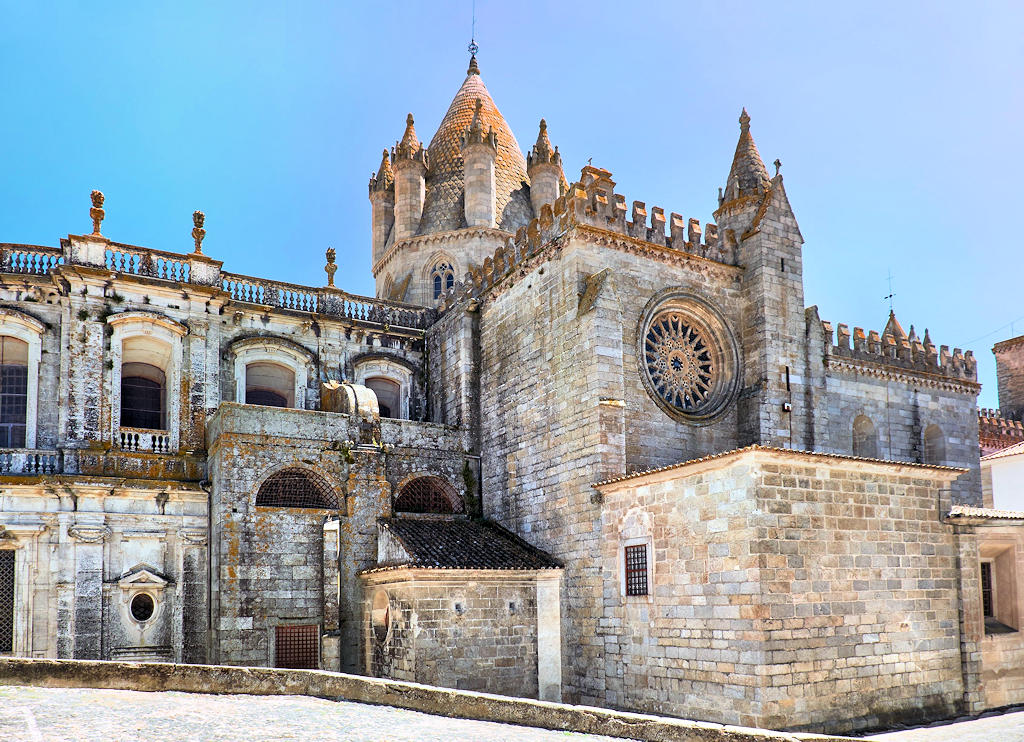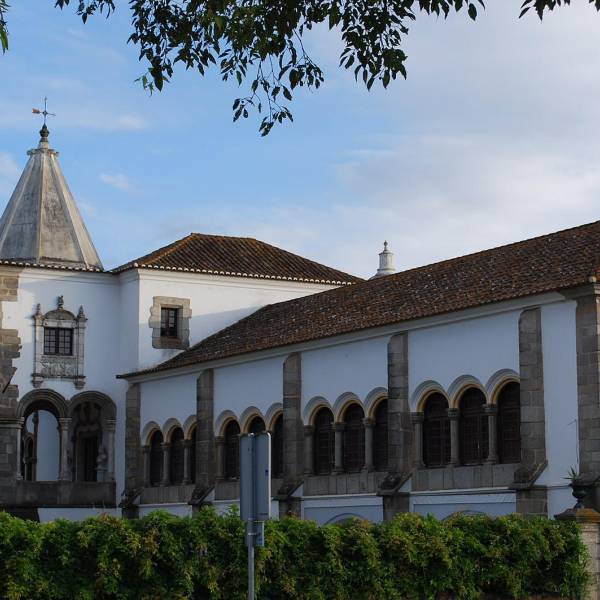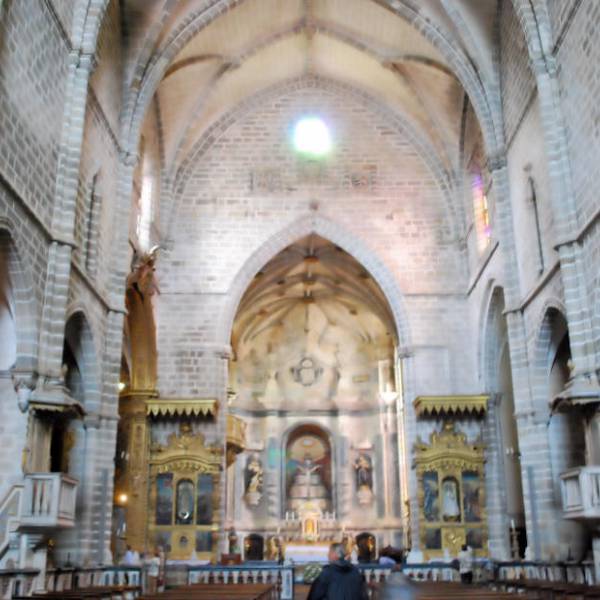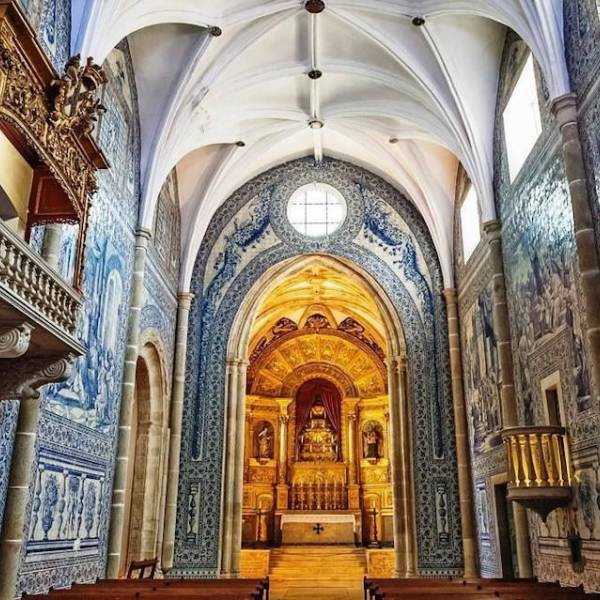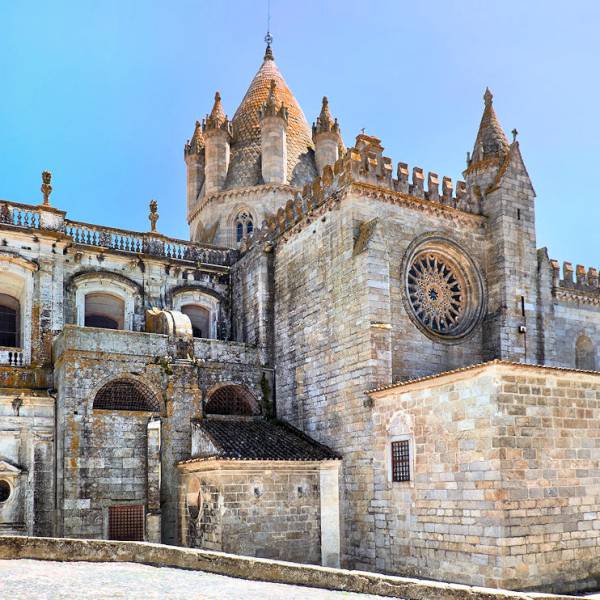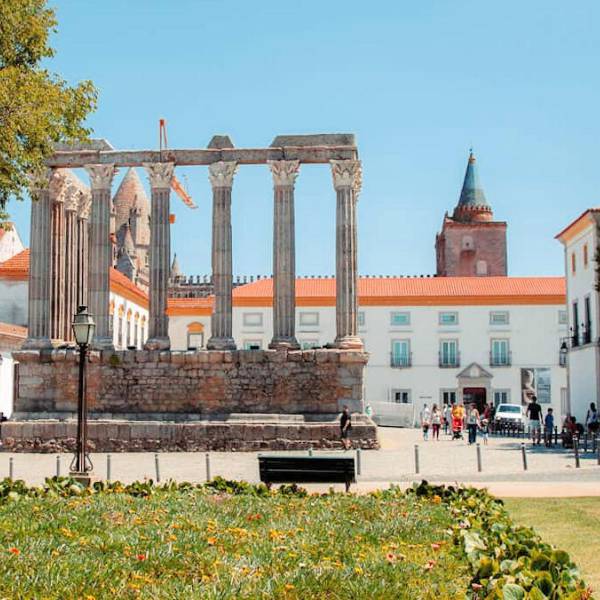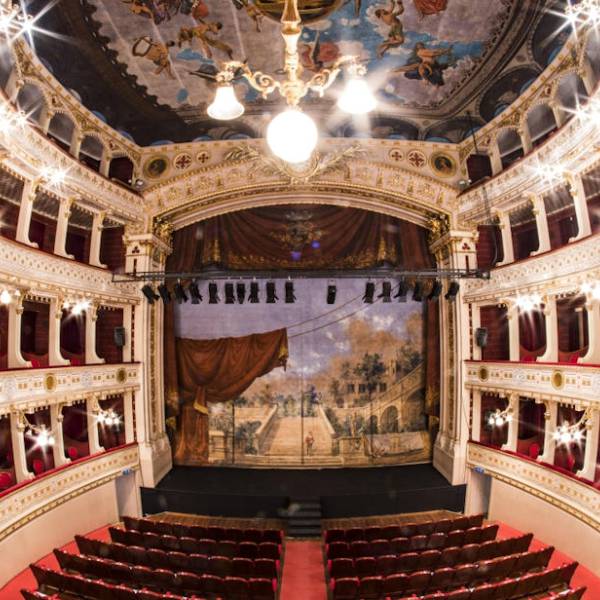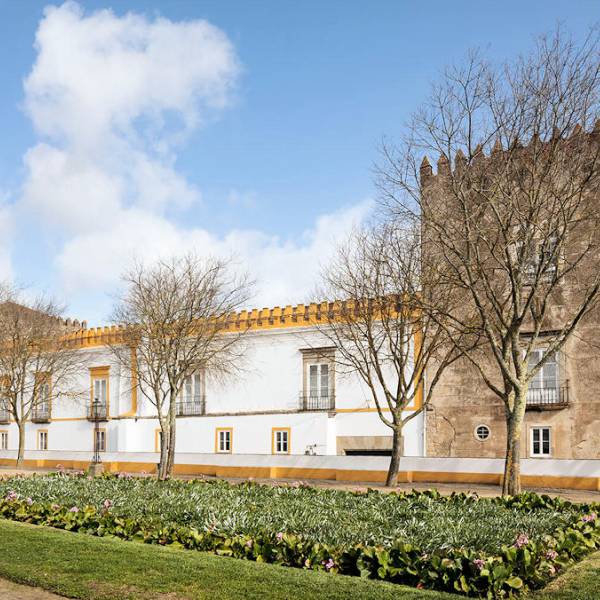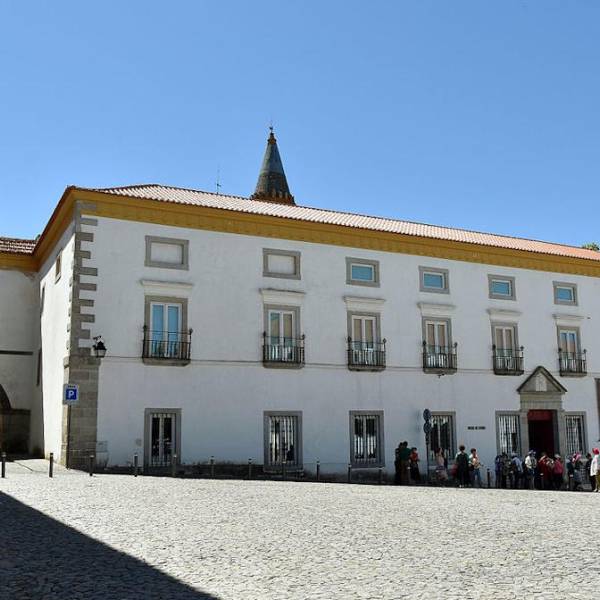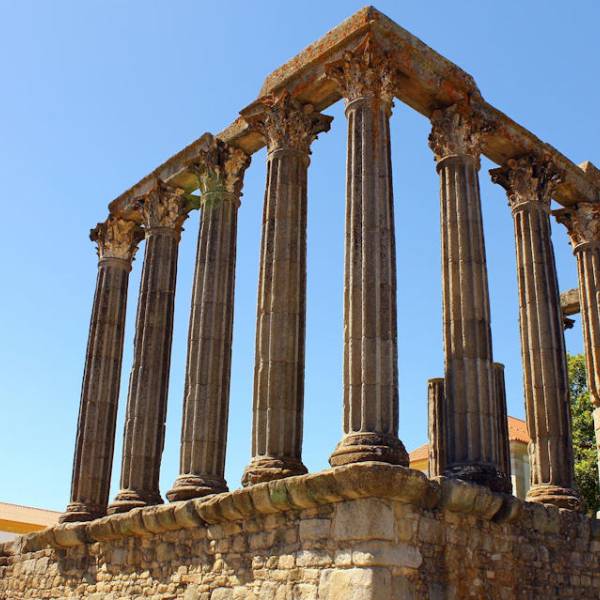The Cathedral of Évora, located in the city of Évora, Portugal, is a must-visit destination for history and architecture enthusiasts. As one of the oldest and most significant monuments in the area, it stands proudly atop the city and serves as the seat of the Archdiocese of Évora. Designated as a UNESCO World Heritage Site, this Roman Catholic church showcases stunning Gothic architecture and has undergone various expansions and additions throughout the centuries. From its impressive façade and intricate sculptures to its grand interior and ornate chapels, the Cathedral of Évora offers visitors a captivating journey through time and a deeper understanding of Portugal's religious and cultural heritage.
The initial structure, built between 1186 and 1204, was relatively modest. However, over time, the cathedral underwent expansions and renovations, transforming into a magnificent example of Gothic architecture. The period between 1280 and 1340 saw significant enlargement and remodeling, contributing to the cathedral's grandeur.
One of the notable features of the Cathedral of Évora is its Gothic cloisters, constructed in the 14th century. These cloisters showcase intricate architectural details and provide a serene atmosphere for contemplation and reflection. Walking through the cloisters, visitors can admire the skillful craftsmanship and enjoy a tranquil escape from the bustling city.
Another highlight of the cathedral is the Manueline chapel of the Esporão, added in the early 16th century. The Manueline style, characterized by elaborate ornamentation and maritime motifs, is prevalent throughout Portugal and adds a distinct charm to the chapel. Inside, visitors can appreciate the harmonious blend of architectural elements and decorative details.
The Cathedral of Évora is also associated with significant historical figures. Cardinal-King Henrique, who served as the archbishop and cardinal of Évora, holds a prominent place in its history. As the brother of King John III, Cardinal Henrique ascended to the throne of Portugal between 1578 and 1580, following the death of King Sebastian in the Battle of Alcácer-Quibir. This cardinal-king's rule left an indelible mark on the cathedral's history and further elevated its status.
In addition to its architectural and historical significance, the Cathedral of Évora played a vital role in the music history of Portugal. In the 16th and 17th centuries, it served as the center for the renowned School of Évora, known for its contributions to polyphonic music. Composers such as Mateus de Aranda, Manuel Mendes, Duarte Lobo, and Filipe de Magalhães were associated with the cathedral, and their works resonated throughout the country.
Stepping inside the cathedral, visitors are captivated by its grandeur. The main façade, built with rose granite, features two imposing towers that flank a narthex enclosing the main portal. Above the narthex, a magnificent Gothic window allows the interior to be bathed in soft, ethereal light. The towers themselves exhibit distinctive conical spires, one of which is adorned with medieval colored tiles. The outer walls of the cathedral, like many Portuguese churches of the time, showcase decorative arcaded corbels and battlements.
The interior of the Cathedral of Évora reveals its true beauty and spiritual ambiance. The design closely follows the floor plan of Lisbon Cathedral, with a Latin cross layout, a soaring nave flanked by two aisles, and an apse adorned with three chapels. The transept, illuminated by two Gothic rose windows—one depicting the morning star and the other the mystical rose—exudes an air of tranquility.
The large nave, featuring a pointed barrel vault, is accentuated by the use of white mortar on the high walls, pillars, and vaults. As visitors explore further, they encounter the Manueline high choir, designed by architect Diogo de Arruda in the early 16th century. Adorned with fine Gothic vaulting, the high choir also boasts Mannerist-style choir stalls, intricately carved in oak by sculptors from Antwerp in 1562. These stalls depict mythological scenes, hunting parties, and everyday life, providing a glimpse into the cultural milieu of the time.
Lisbon.vip Recommends
Central to the cathedral's interior is the magnificent baroque main chapel. Rebuilt between 1718 and 1746 under the patronage of King John V, the chapel reflects the Roman baroque style favored by the monarch. Its polychrome marble decoration, including green marble from Italy, white marble from Montes Claros, and red and black marble from Sintra, creates a striking visual impact. The main altar, adorned with sculptural works by the Italian Antonio Bellini, features a crucified Jesus over the altar, sculpted by Portuguese artist Manuel Dias based on a drawing by Vieira Lusitano, a renowned Portuguese painter. The stunning painting adorning the main altar was executed by the Italian artist Agostino Masucci.
The original painted Flemish retable, consisting of 13 panels, once graced the main chapel. However, these panels are now housed in the Évora Museum, where visitors can appreciate their artistic brilliance. Created around 1500 by a workshop in Bruges under the commission of Bishop Afonso de Portugal, the retable showcases exquisite craftsmanship and adds to the cathedral's artistic heritage.
The Cathedral of Évora encompasses several chapels that further contribute to its allure. The chapel in the left transept, known as the Capela do Esporão, underwent reconstruction in the 1520s and exhibits Manueline style. Inside, visitors can marvel at the Renaissance marble portal, a marble sculpture by Nicolau Chanterene, Gothic vaulting, and a Mannerist altar adorned with the painting "Descent from the Cross" by Francisco Nunes. The chapel in the right transept is the final resting place of André de Resende, a prominent humanist of the 16th century. Additionally, it serves as the burial site for João Mendes de Vasconcelos, the Governor of Luanda during the reign of King Manuel I, and Álvaro da Costa, an ambassador and armorer of King Manuel.
The cloisters of the Cathedral of Évora, built between 1317 and 1340, exhibit Gothic style and bear resemblance to the cloisters of Lisbon Cathedral. Despite the use of Late-Gothic tracery, the cloisters' construction with granite lends them a robust appearance. Each corner of the cloister gallery features a marble Gothic statue depicting one of the Four Evangelists. Visitors can ascend to the upper storey via a spiral staircase to enjoy a breathtaking view of the cathedral and the surrounding landscape.
Within the premises of the cathedral, visitors can explore the Cathedral Museum. The museum houses various exhibits of historical and artistic significance. Notable artifacts include the scepter of Cardinal-King Henrique, sacred vestments, liturgical objects, religious paintings, sculptures, and other treasures that span centuries of ecclesiastical history. The museum provides a deeper understanding of the cultural and religious heritage associated with the Cathedral of Évora.
As one of Portugal's most remarkable architectural gems, the Cathedral of Évora stands as a testament to the city's rich history, cultural heritage, and religious devotion. From its humble beginnings as a modest Romanesque church to its transformation into a stunning example of Gothic and Manueline architecture, the cathedral invites visitors to delve into its captivating past. Its awe-inspiring interior, with its soaring vaults, intricate chapels, and artistic treasures, inspires a sense of reverence and appreciation for the craftsmanship of the past.
A visit to the Cathedral of Évora is not only an opportunity to admire the architectural splendor but also a chance to immerse oneself in the spiritual and cultural fabric of Portugal. The cathedral's serene ambiance, combined with its historical significance and artistic wealth, offers a truly enriching experience for all who venture through its doors. Whether one is a history enthusiast, an art lover, or a seeker of tranquility, the Cathedral of Évora is a destination that promises to leave a lasting impression and a deep appreciation for Portugal's cultural heritage.
Map View


